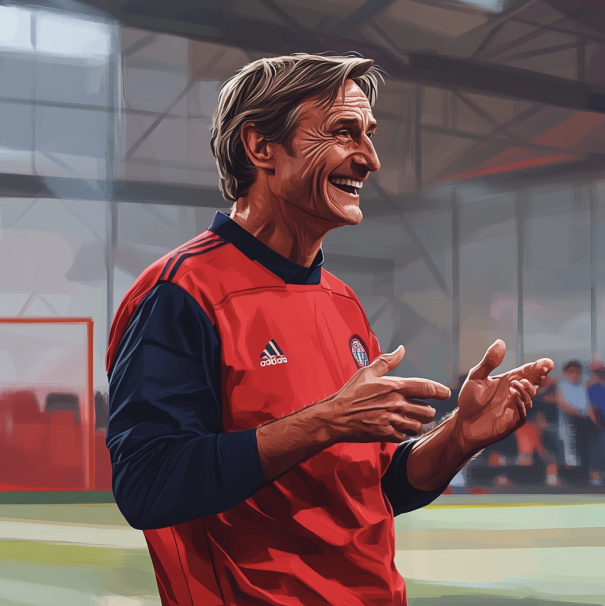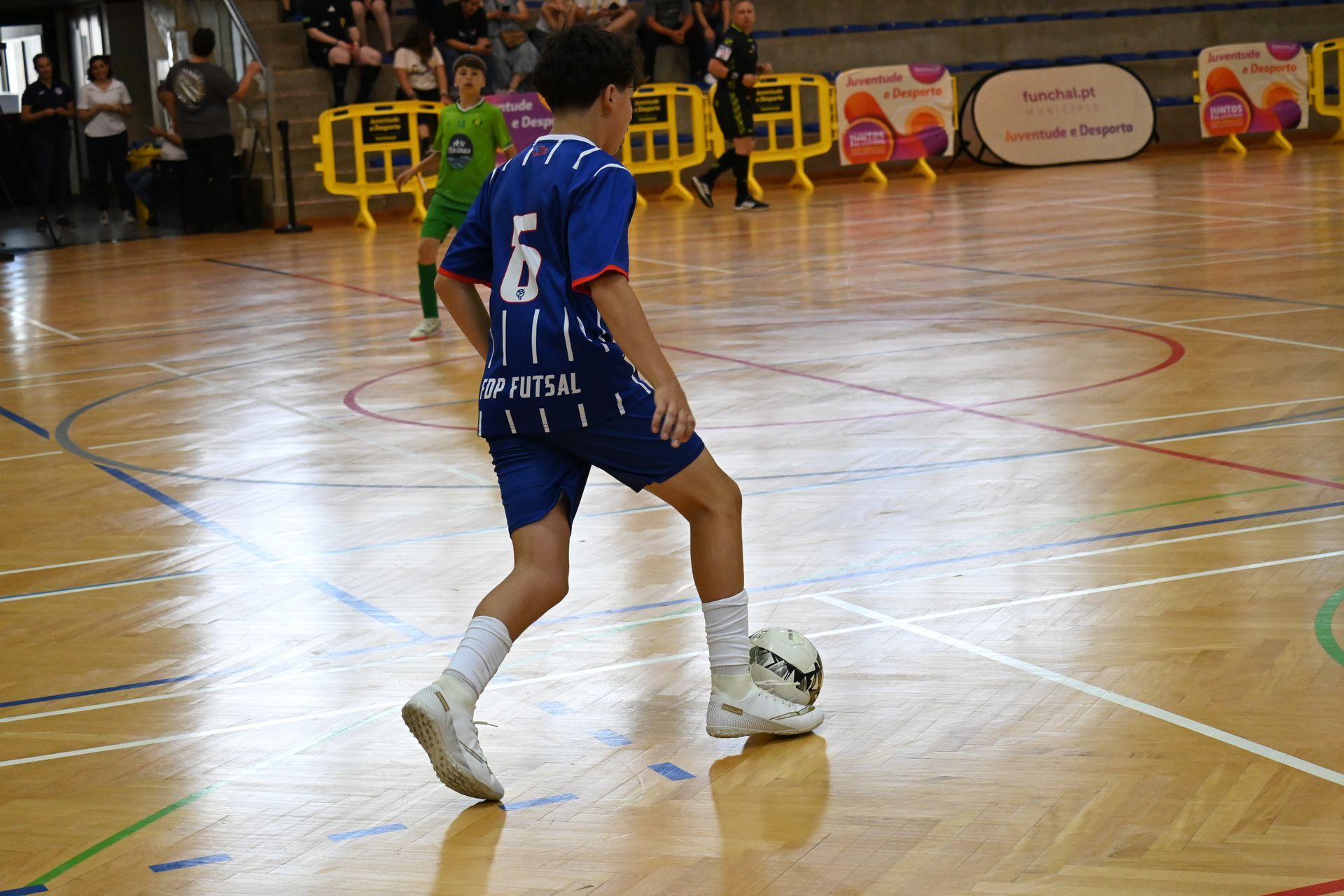The Influence of Futsal on Soccer: Embracing Marcelo Bielsa's Philosophy through Positional Play
The Influence of Futsal on Soccer:
Embracing Marcelo Bielsa's Philosophy through Positional Play

Marcelo Bielsa's philosophy of football, which stresses the significance of game control through possession and positional play, finds an intriguing parallel in the world of futsal. Known for its fast pace and close quarters, futsal is an excellent platform for honing the skills and strategies essential to Bielsa’s approach. This article explores how futsal can serve as a practical training ground for mastering the principles of positional play, as advocated by football tacticians like Johan Cruyff and Pep Guardiola.
1. Mastery of Tight Spaces
Futsal is played on a smaller pitch compared to soccer, which naturally leads to tighter spaces. Players must learn to control the ball, pass, and maintain possession under pressure. This aligns with the principle of controlling possession and enhances a player’s ability to handle the ball in confined areas during a soccer match.
2. Enhanced Decision Making
With fewer players and a faster pace, futsal demands quick decision-making. This nurtures a player’s ability to read the game and make swift, effective choices, a key aspect of positional play where the right decisions can dictate the flow and control of the game.
3. Development of Technical Skills
Futsal players touch the ball far more often than in soccer, allowing for significant improvements in ball control and passing accuracy. These technical skills are crucial for implementing positional play in soccer, where precise passing and ball control underpin the ability to maintain possession and structure on the field.
4. Emphasis on Movement and Positioning
Due to the dynamic nature of futsal, players must continuously adjust their positioning. This practice helps in understanding the movements required in positional play in soccer, where strategic positioning and fluid movement are vital for creating passing options and maintaining the team's shape.
5. Utilization of Half-Spaces
Futsal helps players learn to exploit half-spaces, a crucial aspect of positional play. The small playing area in futsal forces players to utilize these spaces effectively to create scoring opportunities, directly translating to soccer where half-spaces can be key to breaking down defenses.
What are half spaces?
In soccer, half spaces are two imaginary vertical lanes on a football pitch that are located between the wide areas and the central lane:
- Wide areas
- Also known as outer spaces, these are the lanes between the touchline and the outside edge of the penalty area
- Central lane
- This is the vertical space in the middle of the pitch, usually defined by the width of the center circle or six-yard box
- Half spaces
- These are the second and fourth columns from left to right on the pitch, between the wings and the central zone

Half spaces are seen as key areas for creating and utilizing space, serving as vital reference points for teams that employ strategies emphasizing player spacing. When utilized by attacking teams, these areas can disrupt the defensive alignment of the opposition by pulling defenders out of their usual positions. Additionally, half spaces provide optimal positions for shooting, enabling players to aim at either side of the goal from approximately equal distances.
Although the concept of half spaces has existed for decades, it has gained prominence in contemporary football, driven by a focus on possession-based strategies and expansive formations. Coaches often use the outer edges of the six-yard box and the penalty area as visual markers to define the width of the half spaces.
6. Improved Defensive Compactness
Futsal requires teams to defend as a compact unit due to the limited space. This improves a player’s understanding of compactness and spatial awareness, essential for a soccer team’s ability to control the game defensively and transition smoothly between defense and attack.
7. Effective Counter-Pressing
The quick transition from attack to defense in futsal trains players in effective counter-pressing techniques. This skill is crucial in soccer’s positional play, where regaining possession quickly after losing it ensures control and limits the opponent's opportunities.
8. Cultivation of a Collective Team Spirit
Futsal inherently requires a high level of coordination and teamwork due to its fast-paced nature and limited space. This environment fosters a strong collective spirit among players, aligning with Bielsa's philosophy of creating a unified team approach. The emphasis on teamwork in futsal can directly enhance a soccer team's ability to operate cohesively, particularly in executing complex tactical setups that are essential in positional play.
9. Encouraging Vertical Play
The limited dimensions of a futsal pitch necessitate a style of play that often involves quick, vertical movements towards the goal. This aspect of futsal is beneficial for soccer players to develop the ability to execute and respond to vertical play effectively, a principle that is crucial in penetrating compact defenses in soccer.
10. Intensity and Stamina
Futsal matches are characterized by their high intensity and the need for continuous movement, which greatly contributes to improving a player's overall stamina and endurance. The ability to maintain high energy levels throughout a soccer match is crucial, especially when employing a high-pressing game based on positional play principles, where players are expected to constantly move, cover spaces, and press opponents.
11. Enhanced Peripheral Vision and Spatial Awareness
Playing futsal regularly improves a player’s peripheral vision and spatial awareness due to the need to be aware of the ball, teammates, and opponents in a confined space. These skills are invaluable in soccer as they allow players to better navigate tight spaces, anticipate the movement of opponents, and execute precise passes that are essential for maintaining possession and controlling the game.
12. Fostering Creativity and Flair
The creative demands of futsal, where players often find themselves needing to improvise to overcome tightly packed defenses, help in developing a player’s ability to think creatively on the soccer field. This creativity is key in positional play, as it can lead to unexpected breakthroughs and solutions when facing well-organized soccer defenses.
13. Learning to Play Under Pressure
Futsal players constantly face high-pressure situations due to the close proximity of opponents and the rapid pace of the game. This experience is invaluable for soccer players, particularly when implementing Bielsa's philosophy, which often involves playing out from the back and maintaining composure under pressure to retain possession and control the game.
By incorporating futsal into their training, soccer teams can significantly enhance their tactical flexibility, technical skills, and mental acuity. The principles learned and refined in the compact, intense environment of futsal are directly transferable to the soccer field, providing players and teams with a wider array of options to control the game and execute their strategic vision effectively. Marcelo Bielsa's philosophy of maintaining initiative through collective effort and tactical control can be vividly realized through the lessons drawn from futsal, bridging the gap between theory and practice in the quest for soccer excellence.
Contributed By: Niko Alexopoulos
DON'T MISS ANY BLOG POSTS
Unlock Exclusive Insights: Subscribe Now & Stay Ahead of the Curve! Don't Miss a Single Blog Post—Join Our Community for Expert Tips, Fresh Perspectives, and Insider Knowledge. Your Ticket to Stay Informed, Inspired, and Empowered Awaits!
MAXIMIZE YOUR POTENTIAL
Empower Your Journey: Subscribe for Exclusive Access to Training, Programs, Camps, and Events. Elevate Your Skills and Seize Every Opportunity!










